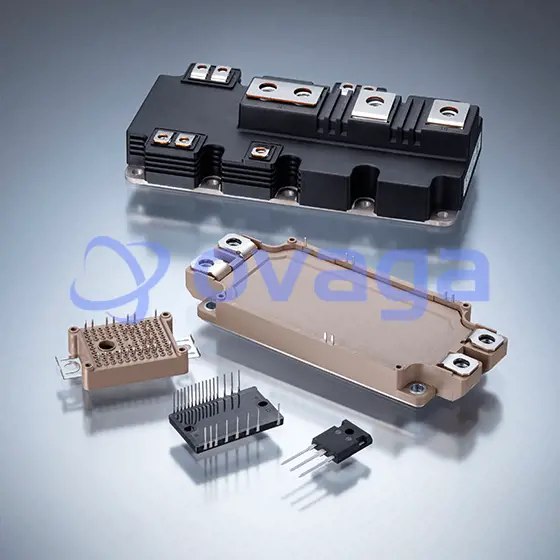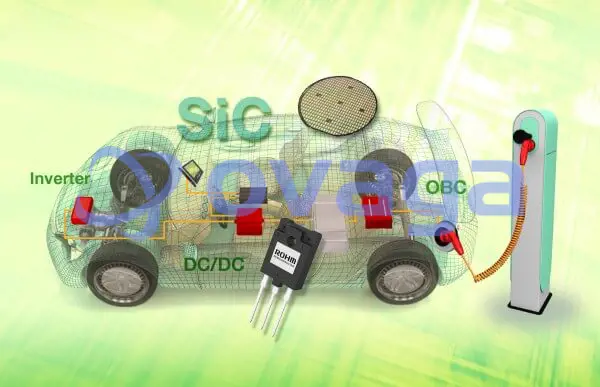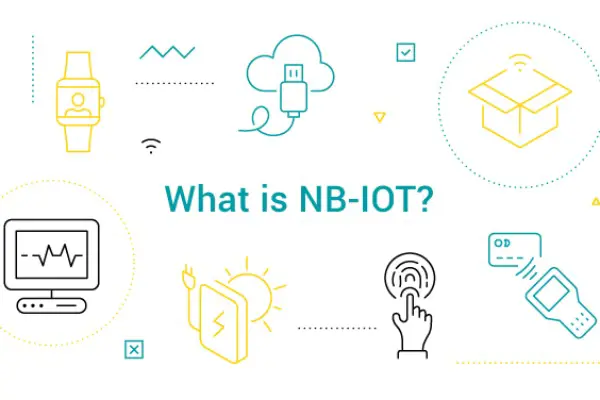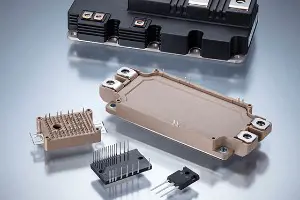IGBT Latest Development Trend 2023
Update Time: Mar 22, 2023 Readership: 3405
Contents
The current semiconductor cycle is on the downside, and many segments of the semiconductor industry chain are clearly entering into the inventory adjustment cycle. However, boosted by the two mainstream applications of electric vehicles and solar photovoltaics, IGBTs (insulated gate bipolar transistors) have recently experienced a large degree of shortage, with prices rising and the industry describing the shortage situation as "not a matter of high prices, but simply unavailable".

IGBT Supply Exceeds Demand and Foundry Prices are Rising
Since the lack of cores for automobiles in 2020, the structural lack of cores for automotive chips has become more and more obvious, and IGBTs have been in short supply. In the second half of 2022, it even surpassed the automotive MCU and became the biggest constraint affecting the expansion of automotive production.
Earlier this year, media news showed that Hanlei Group raised the foundry price of IGBT production line by about 10% at the beginning of the year. It is reported that Han Lei mastered IGBT chip components leading Infineon large single, in the wafer foundry offer generally retraced, Han Lei Group counter-trend price increases, highlighting the hot market conditions.
According to the "2023 Q1 Chip Market Report" released by Future Electronics on February 17, 2023, the IGBT Q1 and 2022 Q4 delivery schedules of ST (STMicroelectronics), Microsemi (MGM), Infineon (Infineon), IXYS (IXYS), Fairchild (Fairchild Semiconductor), the five major brands, are basically The delivery time remains tight, with the longest being 54 weeks.
Specifically, in Q1 2023, ST's IGBT lead time is 47-52 weeks, Microsemi's IGBT lead time is 42-52 weeks, IXYS's IGBT lead time is 50-54 weeks, Infineon's IGBT lead time is 39-50 weeks, and Fairchild's IGBT lead time is 39-52 weeks. However, the delivery trend and price trend of these 5 major brands are stable, and there is no upward trend.
Recently, industry sources talk about the IGBT shortage phenomenon, saying "the price increase is not new, not the problem of high prices, but simply can not buy", and its analysis of the wave of shortages will continue for a while.
Industry analysis, IGBT shortage for 2 major reasons, one is the proportion of the current solar inverter using IGBT has increased significantly, the second is that the current semiconductor industry is in the adjustment period, not only limited production capacity, and many production capacity are taken away by the electric car factory, in the crowding effect, resulting in IGBT shortage.
With the rise of new energy vehicles, the demand for high voltage has increased greatly, and IGBTs have become the focus of industrial development. The number of IGBTs used in an electric vehicle is as high as hundreds, which is seven to ten times that of traditional fuel vehicles. In industrial use, there are AC servo motors, inverters, wind and solar power generation and other green power applications, and in the high-voltage part, there are high-speed railroads and other rail transportation and grid applications.
After IGBT, SiC Becomes the Next Windfall for Automotive Semiconductor Manufacturers
With SiC power components as a major technology relied on for winning electric vehicle performance, vehicle manufacturers are scrambling to tie up SiC supplies for the next few years, and IGBT suppliers are no exception.

According to Gong Ruijiao, an analyst at TrendForce, silicon carbide has superior electrical characteristics that are unmatched by traditional silicon materials. Silicon carbide replacing silicon based IGBTs is an irreversible trend, especially under the 800V charging architecture, silicon based IGBTs have reached the limit of performance and can hardly meet the technical requirements of main drive inverters.
From the perspective of downstream applications, silicon carbide components are the core components that electric vehicle manufacturers must consider in the future, in addition to the accelerated introduction of photovoltaic energy storage scenarios, so in recent years the silicon carbide market will maintain an oversupply situation, and the industry will not reduce the heat.
TrendForce predicts in its latest research report that with the increasing number of cooperation projects between ON Semiconductor, Infineon and other automotive and energy companies, the top two applications for silicon carbide power devices are new energy vehicles and renewable energy, which will reach $1.09 billion and $210 million respectively in 2022, accounting for 67.4% and 13.1% of the overall market value of silicon carbide power devices. 13.1%. By 2023, the overall market value of silicon carbide power devices will reach $2.28 billion, an annual growth of 41.4%.
TrendForce predicts that by 2026, the market value of silicon carbide power devices is expected to reach $5.33 billion. The mainstream applications still rely on electric vehicles and renewable energy, with the output value of electric vehicles reaching $3.98 billion, a compound annual growth rate of about 38%, and renewable energy reaching $410 million, a compound annual growth rate of about 19%.
IGBT and the Major Manufacturers
At present, IGBT is mainly dominated by European and Japanese major manufacturers, with Infineon having the highest market share, and Japan Fuji Electric, ON Semiconductor, Toshiba, STMicroelectronics, etc. are also major suppliers.
Infineon
In 2023, Infineon will focus on SiC, BMS and MCU as key markets.
On February 16, it announced that it will invest 5 billion euros to build a 12-inch wafer fab in Dresden, Germany. It is reported that the new plant for analog/mixed-signal technology and power semiconductors is scheduled to start production in 2026, and its production of analog/mixed-signal components and power semiconductors will be mainly used in automotive and industrial applications.
Renesas Electronics
For its part, Renesas Electronics announced last May that it will invest 90 billion yen in its Kofu plant (Kofe City, Yamanashi Prefecture), which closed in October 2014, with the goal of resuming its 300mm power semiconductor production line in 2024 to produce products including IGBTs and power MOSFETs.
In August 2022, Renesas Electronics announced that for next-generation electric vehicle inverter applications, AE5 generation IGBT products will begin mass production in the first half of 2023 on Renesas' 200mm and 300mm wafer lines at its Naka plant in Japan.
STMicroelectronics
For its part, STMicroelectronics announced last October that it will build a €730 million silicon carbide wafer fab in Italy. According to the report, this will be the first factory in Europe to produce 150mm SiC epitaxial substrates in volume, integrating all steps of the production process. ST is committed to developing 200mm wafers in the future.
ON Semiconductor
On Feb. 11, ON Semiconductor officially took over a 12-inch fab in New York for which it has committed to invest $1.3 billion. The facility will produce chips to support electric vehicles, electric vehicle charging and energy infrastructure and will drive the company's ability to accelerate growth in the megatrends of vehicle electrification, ADAS, energy infrastructure and factory automation, ON Semiconductor said.
Hassane El-Khoury, chief executive officer of ON Semiconductor, noted that ON Semiconductor will provide SiC with $4 billion in committed revenue over the next three years, about $1 billion in 2023, and could grow by about 30 percent to $1.7 billion in 2024 and 2025. To reach its goal, ON Semiconductor has already doubled its fab capacity for SiC production and plans to double it again in 2023 and then again in 2024.
As IGBT suppliers continue to ramp up SiC, gradually alleviating the current power semiconductor shortage while new technology convergence will bring a new experience to the power semiconductor market.
Popular Blogs
-
![The Comparative Analysis of Active and Passive Filters in Electronics]()
The Comparative Anal...
Active filters use active components such as tra...
-
![How DSP Improves the Efficiency of Audio Amplifiers]()
How DSP Improves the...
Have you ever thought the integrated Digital Sig...
-
![What is NB-IoT Technology]()
What is NB-IoT Techn...
NB-IoT (Narrow Band Internet of Things, NB-IoT)...
-
![IGBT Latest Development Trend 2023]()
IGBT Latest Developm...
In this article, our team will introduce the lat...














